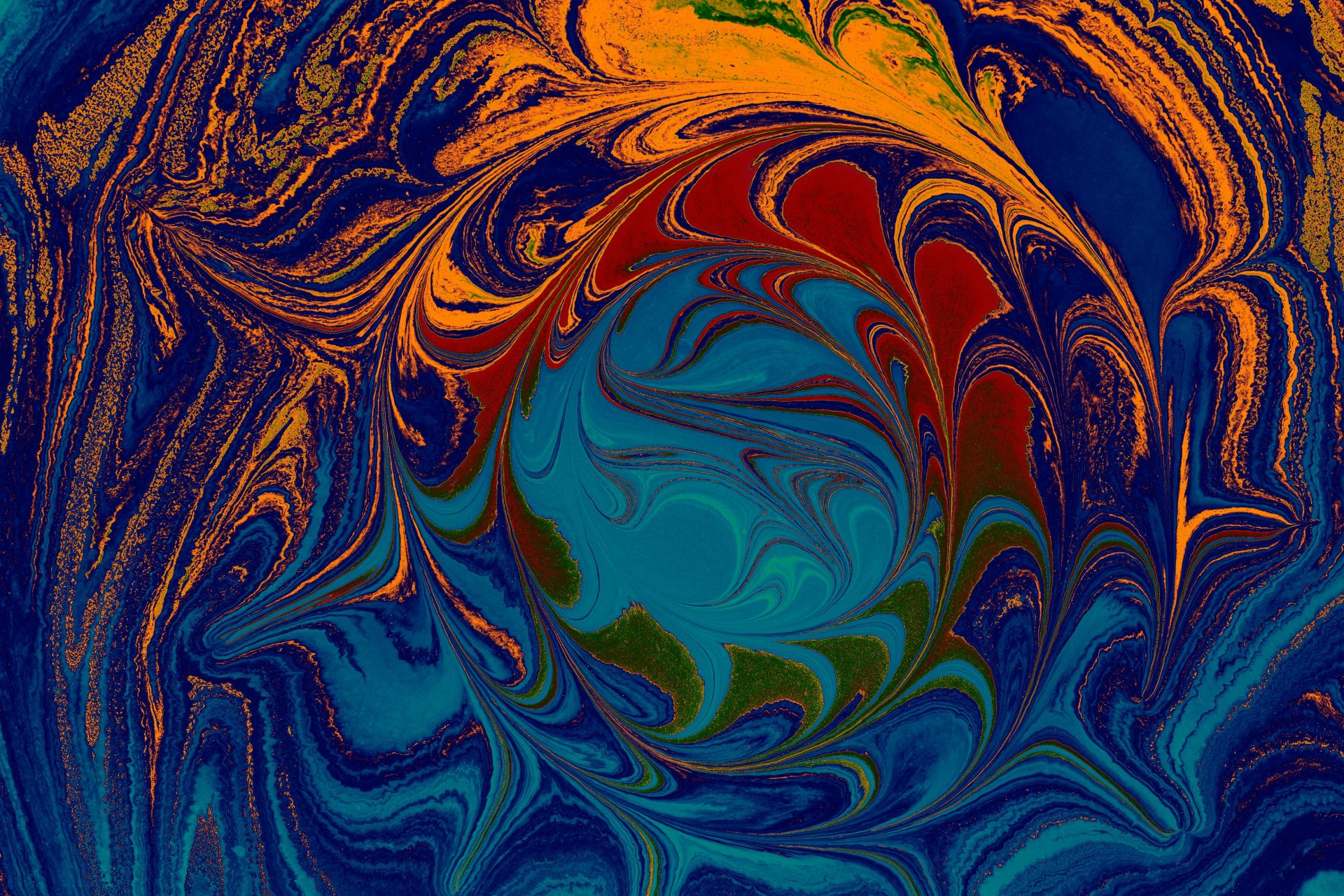The Truth About Demonic Symbols

Before diving in, please note: This post is for informational purposes only. If you’d like to know more about how we approach topics, feel free to check out our friendly Disclaimer Page.
Hey there, amazing readers! 🖐️ Just a quick note: yes, we know there are a lot of ads here. Trust us, we get it—it’s not the prettiest look, but they help us keep this blog alive and kicking. Those pesky little ads cover the costs of all the behind-the-scenes magic, from hosting and tech stuff to creating content we hope you’ll love.
We’re committed to delivering quality posts, and your support (even just sticking around despite the ads) means everything to us. So, bear with us, and thanks for helping us keep the good vibes rolling. Now, on to the fun stuff! 😉
TRANSLATE BUTTON AT THE END OF THE ARTICLE
A Quick Overview
Let’s dive into a fascinating topic: demonic symbols.
They often carry a heavy stigma, associated with dark arts, occult practices, and evil intentions.
Yet, there’s so much more to them than meets the eye.
In this article, we’ll explore what these symbols really are, their history, the misconceptions surrounding them, and their role in modern culture.
I promise it’ll be an enlightening journey—so buckle up!
Understanding Demonic Symbols: A Cheerful Introduction
Demonic symbols evoke a range of emotions.
For many, they stir fear or intrigue.
It’s easy to see why; Hollywood and folklore often present them as markers of evil.
But, let’s take a moment to look at them with a sprinkle of curiosity rather than dread.
Have you ever seen a pentagram or a sigil and felt a shiver down your spine?
I know I have!
These images might seem ominous at first glance, but let’s dig deeper.
Symbols have a unique power.
They condense complex ideas into visual forms, making them easy to share and understand.
Think about how a simple heart can symbolize love.
While some symbols are linked to darker themes, many have ancient roots in spiritual traditions.
They often represent a quest for knowledge, protection, or connection to something greater than ourselves.
This paints a different picture, doesn’t it?
So, instead of viewing demonic symbols as solely harbingers of evil, let’s explore the stories they tell and the meanings they carry.
You might just find that they offer insights into human nature, belief systems, and even our desire for empowerment.
What Are Demonic Symbols? A Clear Explanation
At their core, demonic symbols are graphical representations that have been associated with malevolent forces or dark spiritual practices.
They often emerge from various religious, cultural, and mystical contexts.
You might see these symbols in rituals, literature, and even art.
To break it down further, here are a few characteristics:
Spiritual Significance: Many symbols signify spiritual concepts, ranging from protection to the pursuit of knowledge.
They’re like keys to deeper understanding.
Cultural Origins: Different cultures have their own interpretations of symbols.
For example, the same symbol can have vastly different meanings in a Western tradition compared to an Eastern one.
Historical Context: Symbols often evolve over time.
What may have started as a protective emblem could later be reinterpreted as a sign of evil.
Visual Language: They communicate complex ideas visually, much like emojis do in our text messages.
A symbol can evoke feelings and thoughts instantaneously.
So, when we talk about demonic symbols, we’re referring to a wide range of images that can embody different meanings depending on their cultural and historical context.
The History Behind Demonic Symbols: An Overview
The history of demonic symbols is rich and varied.
They’ve been used throughout centuries, often in ways we might not expect.
Let’s embark on a little timeline of sorts to uncover their fascinating past:
Ancient Civilizations: Many symbols have roots in ancient civilizations.
For instance, the pentagram dates back to the Sumerians and later, the Greeks, where it symbolized balance and harmony.
Religious Texts: In the Judeo-Christian tradition, symbols like the goat’s head became associated with the devil due to their appearance in various scriptures.
This association grew stronger during the Middle Ages.
Occult Practices: The Renaissance saw a revival of interest in alchemy and mysticism, leading to a surge in the creation of symbols like the Sigil of Baphomet, which became emblematic of the occult.
Modern Interpretations: Fast forward to today, and you’ll find these symbols in pop culture, often stripped of their original meanings or reimagined entirely.
Think of how many rock bands use pentagrams in their logos!
Understanding the historical context helps us appreciate the nuances behind these symbols.
They’ve transformed over time, reflecting changes in society’s beliefs and fears.
Common Misconceptions About Demonic Symbols Explained
Misconceptions abound when it comes to demonic symbols.
It’s easy to jump to conclusions based on fear or sensationalism.
Let’s tackle some of these misconceptions head-on:
All Symbols Are Evil: Not true!
Many symbols deemed ‘demonic’ once represented concepts like protection, wisdom, or even love.
Used Only in Dark Practices: While some are utilized in occult rituals, others find their way into art, literature, and even personal empowerment practices.
Only for the Initiated: Some believe you need special knowledge to engage with these symbols.
In reality, their meanings can be accessible to anyone interested in learning.
Static Meanings: People often think symbols have fixed meanings.
In truth, their significance can evolve based on context and culture.
By addressing these misconceptions, we can approach the subject with a more open mind, free from the weight of stigma.
The Role of Demonic Symbols in Popular Culture
Demonic symbols pop up all over popular culture, often in unexpected ways.
They’re not just relegated to horror films or heavy metal albums; they find their way into everyday media.
Here are some examples:
Movies and TV: Think of films like "The Exorcist" or series like "Supernatural." They often use symbols to build suspense or signify evil.
Literature: Many authors, from H.P.
Lovecraft to Neil Gaiman, incorporate demonic symbols to enhance the supernatural elements in their works.
Fashion: Believe it or not, some fashion trends use these symbols as edgy statements.
They serve to provoke thought or evoke a rebellious spirit.
Art: Modern artists sometimes employ demonic symbols to challenge societal norms or comment on spirituality.
This pervasive presence in popular culture reflects our fascination—and often fear—of the unknown.
It shows how these symbols can be reinterpreted in contemporary contexts, sparking conversation and curiosity.
How Demonic Symbols Are Portrayed in Art
Art has a unique way of expressing complex themes, and demonic symbols often make striking appearances.
Artists throughout history have used these symbols to provoke thought, challenge norms, or simply create visually captivating pieces.
Historical Art: Take a look at medieval paintings.
They often depict demonic figures alongside symbolic representations of good and evil, helping communicate moral lessons.
Modern Art: Contemporary artists might incorporate demonic symbols to comment on issues like consumerism or existential dread.
The contrast can be jarring but thought-provoking.
Street Art: Graffiti artists sometimes use these symbols to challenge authority or societal expectations.
It’s a way of reclaiming misunderstood imagery.
Photography: Some photographers use symbolism to capture the tension between light and dark, exploring themes of duality and the human experience.
Art breathes new life into demonic symbols, making them accessible and relevant today.
It’s amazing how something so steeped in history can spark new conversations and interpretations!
Exploring the Meaning of Popular Demonic Symbols
Let’s take a closer look at a few popular demonic symbols.
Understanding their meanings can shift our perspective entirely.
Here’s a brief exploration:
Pentagram: Often associated with witchcraft, this symbol originally represented the five elements—earth, air, fire, water, and spirit.
It’s a symbol of balance and harmony.
Sigil of Baphomet: Employed by the Church of Satan, it symbolizes individualism and freedom.
It’s not just a badge of darkness but an emblem of empowerment.
Ankh: While often recognized as an Egyptian symbol of life, it has been co-opted into various spiritual practices, sometimes being viewed in a less-than-innocent light.
The Eye of Horus: This ancient Egyptian symbol represents protection and royal power.
It can easily be misinterpreted but has strong positive connotations.
Demonic symbols may seem intimidating, but they often embody much more than what we see on the surface.
Their meanings can inspire introspection and a greater understanding of human beliefs.
Are Demonic Symbols Truly Evil? A Different Perspective
Let’s tackle the big question: Are demonic symbols inherently evil?
I like to think of it like this: symbols themselves are neutral.
It’s the intention behind their use that gives them power.
Context Matters: A symbol can have different meanings in different contexts.
Just as a skull and crossbones can mean danger or be a cool design.
Cultural Interpretations: In some cultures, symbols considered demonic in the West may hold positive or protective meanings elsewhere.
Personal Empowerment: Many people use these symbols for personal empowerment or spiritual exploration.
They reclaim what has been demonized, turning it into a source of strength.
Artistic Expression: Artists often use symbols to challenge norms or provoke thought rather than to promote evil.
It’s essential to separate the symbol from its often sensationalized portrayal.
By doing so, we can appreciate the richness of the discussions they inspire.
The Use of Demonic Symbols in Modern Spirituality
In recent years, the landscape of spirituality has evolved, and demonic symbols have found a surprising place within modern practices.
Here’s how:
Reclamation: Many modern practitioners reclaim these symbols as part of their spiritual journeys.
They find empowerment in what was once viewed as taboo.
Integration into Rituals: Some rituals incorporate symbols for grounding or protection.
They become a part of a broader spiritual framework rather than isolated markers of evil.
Community Building: Online communities often share experiences and insights related to these symbols, fostering connections among those interested in the esoteric.
Personal Exploration: For some, engaging with these symbols is a way to explore their own fears and beliefs, ultimately leading to personal growth.
It’s fascinating to see how symbols that once represented fear can transform into tools for empowerment and self-discovery in modern spirituality.
Debunking Myths: Demonic Symbols in Everyday Life
Demonic symbols might seem like a distant concept, but they creep into our everyday lives more than we realize.
Let’s debunk a few myths:
You Don’t Have to Fear Them: Many people assume that merely possessing or encountering these symbols invites negativity.
In reality, they’re just graphics until we ascribe meaning to them.
Not Just for Occultists: While some symbols are used in occult practices, countless individuals incorporate them into personal growth and artistry.
Everyday Designs: You might find symbols in fashion, home decor, or even tattoos.
They can be expressions of rebellion or creativity rather than invitations for darkness.
Spiritual Practices: People across different spiritual practices employ these symbols as part of rituals, meditations, or personal empowerment sessions.
Demonic symbols are all around us, and acknowledging their presence can lead to a more nuanced understanding of how they fit into our lives.
Cultural Significance of Demonic Symbols Across Cultures
Cultural significance amplifies the meaning of demonic symbols.
Let’s explore how different cultures interpret them:
Western Cultures: Often associated with devil worship and evil, leading to fear and stigmatization.
Eastern Traditions: In some Eastern cultures, symbols viewed as demonic in the West may symbolize protection or enlightenment.
Indigenous Practices: Many indigenous cultures use symbols as part of their spiritual practices, often viewing them as conduits for connection with ancestors.
Global Perspectives: In various cultures, symbols are reinterpreted over time, reflecting changing societal values and beliefs.
Cultural lenses shape our understanding of symbols, reminding us that there’s no one-size-fits-all interpretation.
Embracing this diversity enriches our comprehension of human experience.
Finding Positivity: Empowering Uses of Demonic Symbols
Now, let’s shift gears and look at how we might find positivity in demonic symbols.
Here are some empowering uses:
Personal Empowerment: Many individuals adopt symbols as personal talismans.
They can serve as reminders of strength, courage, and resilience.
Artistic Expression: Artists often repurpose demonic symbols to challenge perceptions and evoke emotions, transforming fear into beauty.
Meditation and Reflection: Some practitioners use these symbols in meditation, encouraging a deeper understanding of their fears and aspirations.
Community Building: Engaging with others who share similar interests in these symbols can foster a sense of belonging and mutual understanding.
By reframing how we view demonic symbols, we open ourselves up to the potential for growth, creativity, and empowerment.
They can become tools for self-discovery rather than markers of fear.
Conclusion
As we wrap up this exploration of demonic symbols, let’s remember that symbols are powerful, multifaceted concepts.
They can evoke fear and curiosity but may also serve as tools for empowerment and understanding.
By challenging misconceptions and embracing a more nuanced view, we can learn to appreciate their depth and significance.
So the next time you encounter a symbol labeled as “demonic,” take a moment to consider its history, context, and potential meaning.
You might find that it tells a story worth exploring!

The Enlightenment Journey is a remarkable collection of writings authored by a distinguished group of experts in the fields of spirituality, new age, and esoteric knowledge.
This anthology features a diverse assembly of well-experienced authors who bring their profound insights and credible perspectives to the forefront.
Each contributor possesses a wealth of knowledge and wisdom, making them authorities in their respective domains.
Together, they offer readers a transformative journey into the realms of spiritual growth, self-discovery, and esoteric enlightenment.
The Enlightenment Journey is a testament to the collective expertise of these luminaries, providing readers with a rich tapestry of ideas and information to illuminate their spiritual path.
Our Diverse Expertise 🌟
While our primary focus is on spirituality and esotericism, we are equally passionate about exploring a wide range of other topics and niches 🌍📚. Our experienced team is dedicated to delivering high-quality, informative content across various subjects ✨.
To ensure we provide the most accurate and valuable insights, we collaborate with trusted experts in their respective domains 🧑🏫👩🏫. This allows us to offer well-rounded perspectives and knowledge to our readers.
Our blog originally focused on spirituality and metaphysics, but we’ve since expanded to cover a wide range of niches. Don’t worry—we continue to publish a lot of articles on spirituality! Frequently visit our blog to explore our diverse content and stay tuned for more insightful reads.





